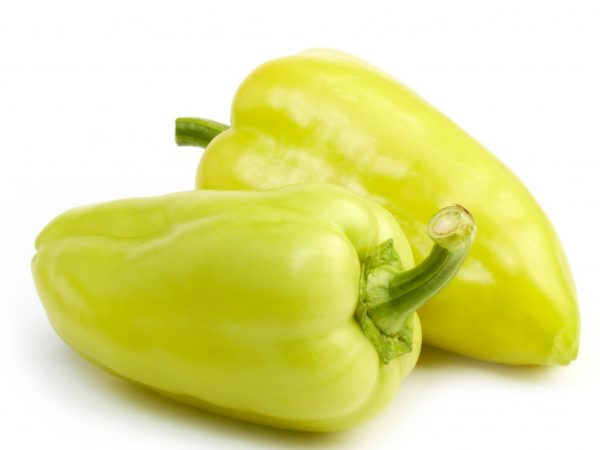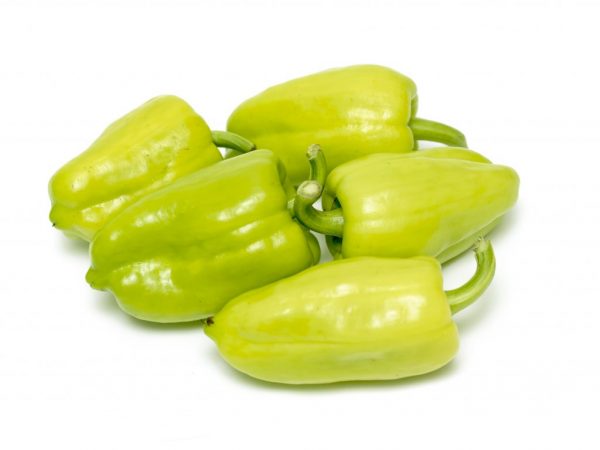Characteristics of Husky salad pepper F1
Pepper Husky f1 is an early ripe, highly productive hybrid of bell pepper with a classic conical shape. Due to its high yield and resistance to bad weather conditions, this variety of pepper is popular among gardeners.

Husky salad peppers F1
Characteristics of the variety
Husky sweet pepper guarantees an early harvest, bears fruit with a very high yield. It is because of this that the hybrid is the best choice for gardeners for growing both in film tunnels or greenhouses, and in open field conditions.
Pepper ripens within 55-60 days after planting seedlings in the ground. When fertilizing, as well as in the presence of drip irrigation, the yield reaches 90-100 t / ha.
Description of the bush
An important advantage of the variety is its powerful root system, thanks to which the Husky perfectly adapts to stress and also tolerates temperature extremes. The design of the bushes is characterized by the presence of a large number of leaves that protect the fruits from direct sunlight and burns.
Description of the fetus
Husky pepper f1 is distinguished by its density, fruit quality and early ripening of the crop. The variety shows itself perfectly during transportation.
Husky fruits differ in average size - from 6 to 12 cm, wall thickness - from 6 to 9 mm, conical shape; weight - 160-220 g.
With technical ripeness, the fruits have a rich white or ivory color, with biological ripeness they acquire a rich red hue with a pleasant shine.
Throughout the growing season, the fruits retain a flat surface and density. The yield of the variety is up to 10 kg per 1 sq. m landing.
Planting and care advice

Plant seedlings correctly
Husky pepper seeds for seedlings are sown 1.5-2 months before planting the sprouts in the ground. Seeds are recommended to germinate at a temperature of 26 ° C to 27 ° C. When the leaves have formed, the plants are transplanted into separate containers with a capacity of less than 0.5 liters each.
Plants may stop growing after transplanting. To quickly restore growth and help the plantings cope with a little stress, the plants are sprayed with Epin fertilizer. After frost, the seedlings are planted in open ground. It is also permissible to land under film or fiber: it depends on the climate and the optimum temperature of the area.
It is recommended to place no more than 4 plants on a plot of 1 sq. m. When planting, you do not need to bury the plant, you should plant it at the same depth at which the Husky grew in a glass. It is also advisable to feed the bushes about 2 or 3 times a summer with mineral fertilizers with a high potassium content.
In order for the seeds to take root well in a greenhouse or in the open field, you need to follow simple rules of care. It is desirable that when sowing the soil is well fertilized and moistened. Daylight hours for seedlings in a greenhouse should be no more than 8 hours. Frequent drip irrigation only promotes plant development.
Pests and diseases
Diseases and pests cause significant damage to the crop, sometimes even lead to its complete loss.
The Husky f1 hybrid is resistant to diseases such as black bacterial spot, and also remarkably resists the tobacco mosaic virus, but is still vulnerable to pests such as:
- aphid;
- Colorado beetle;
- slugs;
- whitefly;
- spider mite.
In the fight against aphids and spider mites, the affected areas of the plant are sprayed with a decoction of tansy or wormwood, as well as an infusion of yarrow. To get rid of the Colorado potato beetle, spray the bushes with an infusion of celandine. To prevent the appearance of slugs on the pepper, small bushes of parsley are planted nearby between the rows: its tart aroma scares away slugs.
Whitefly is a particularly dangerous pest. If a pest is detected in time, it can be washed off with a sufficient amount of clean water. If the plant is already affected, it is treated with Inta-Vir by spraying the bushes. Dosage - 1 tablet for 9-10 liters of pure water.
Conclusion
In caring for the Husky variety, there is nothing difficult for both experienced gardeners and beginners.


